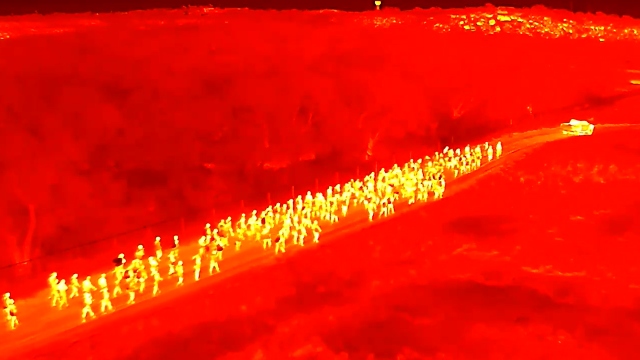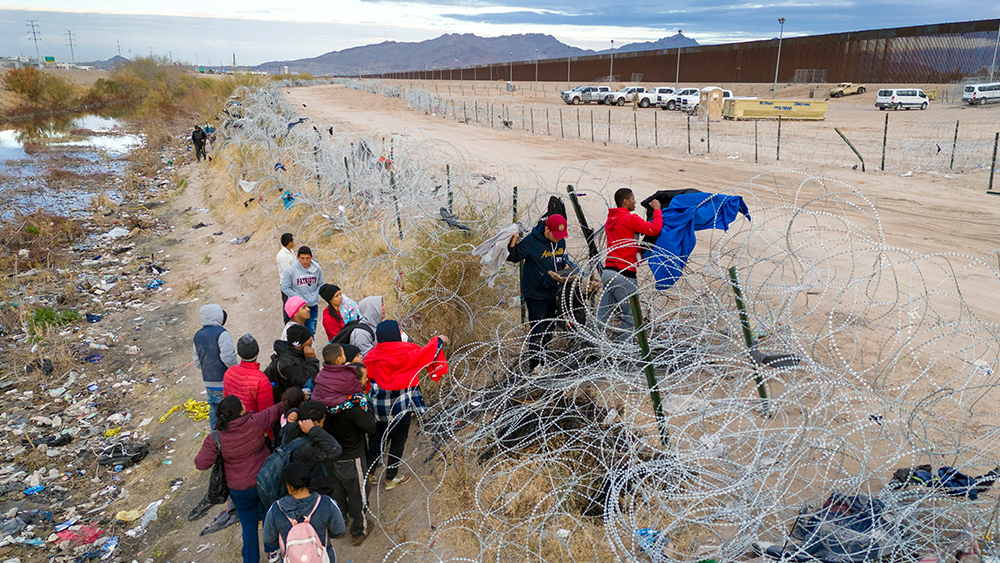HOT STREAK: Phoenix has endured 100 days of extreme heat, with temperatures soaring above 100 degrees
09/06/2024 / By Olivia Cook

Phoenix, Arizona is in the midst of an extraordinary heat wave, with temperatures showing no signs of dropping. On Tuesday, Sept. 3, the city reached an astonishing 100 consecutive days of temperatures hitting 100 degrees or higher.
This new record smashed the previous one from 1993, when the city experienced 76 straight days of extreme heat, as noted by the National Weather Service (NWS).
Phoenix isn’t alone in facing these scorching conditions. Across the southwest – from Oregon to California, western Nevada and the rest of Arizona, millions are under excessive heat warnings until Friday, Sept. 6. A powerful heat wave is sweeping through – pushing temperatures into the triple digits, with new records anticipated across the region. (Related: America’s brutal heat wave is affecting domestic migration hotspots.)
“We’re expecting multiple days with widespread high temperatures into the triple digits,” warned Rich Bann, a meteorologist with NWS’ Weather Prediction Center discussing the heat wave affecting Oregon and, eventually, Washington state.
In California, the NWS reports that Palm Springs and the Coachella Valley could reach blistering highs of 118 degrees by Thursday afternoon. Meanwhile, Furnace Creek in Death Valley National Park might hit a scorching 120 degrees.
This level of heat is fairly typical for southern California, western Nevada and southern Arizona during this time of year. Heather Zehr, a senior meteorologist at AccuWeather, told USA Today that September is often one of the hottest months for these areas due to their southwestern location and dry climate – with temperatures peaking from late August to early September.
Phoenix’s “hot streak” began on May 27 when temperatures first reached 102 degrees and they’ve remained at 100 degrees or above ever since.
This summer, Phoenix recorded an average temperature of 98.9 degrees, with highs averaging 110.4 degrees and lows at 87.5 degrees – marking the hottest summer on record for the city. according to Newsweek. The report also highlighted that since the late 1800s, Phoenix’s average summer temperatures have increased by eight to nine degrees – reflecting the intensity of this relentless heat.
Urban heat island affects Phoenix all year round
Phoenix is at the center of this current heat wave due to a phenomenon known as the urban heat island (UHI) effect, which is when large urban areas experience significantly higher temperatures than the rural areas surrounding them.
The urban heat island (UHI) effect impacts Phoenix throughout the year and is intensified by several factors:
- Extensive asphalt and concrete. The city’s large areas of asphalt, extensive concrete and buildings absorb and retain heat during the day and release it slowly at night. As a result, nighttime temperatures remain elevated compared to nearby rural regions.
- Limited vegetation. The lack of green spaces and vegetation, which would naturally cool the environment through shading and evaporation, exacerbates the UHI effect.
- Energy use. The widespread heavy use of air conditioning and other energy-demanding or energy-intensive activities also contributes to the overall heat generation.
While Phoenix experiences the UHI effect all year, it becomes particularly noticeable during summer when temperatures are already high – making the city even hotter and extending periods of extreme heat. This not only increases discomfort but also has serious implications for health, energy consumption and the environment.
Watch the following video about Phoenix reaching 100 straight days of 100 degrees.
This video is from the Daily Videos channel on Brighteon.com.
More related stories:
Over 75 million Americans under heat advisories amid massive heat wave.
Heat advisories issued in Southern Florida amid record-breaking heat wave.
Summer Health 101: A simple guide to address 5 heat-related illnesses.
How to stay cool if you lose power during a heat wave.
Sources Include:
Submit a correction >>
Tagged Under:
Arizona, chaos, dangerous, disaster, ecology, environment, extreme heat, extreme weather, heat, heat island, heat wave, panic, phoenix, SHTF, urban heat island, weather, weather terrorism
This article may contain statements that reflect the opinion of the author
RECENT NEWS & ARTICLES
COPYRIGHT © 2018 PANIC.NEWS
All content posted on this site is protected under Free Speech. Panic.news is not responsible for content written by contributing authors. The information on this site is provided for educational and entertainment purposes only. It is not intended as a substitute for professional advice of any kind. Panic.news assumes no responsibility for the use or misuse of this material. All trademarks, registered trademarks and service marks mentioned on this site are the property of their respective owners.




















